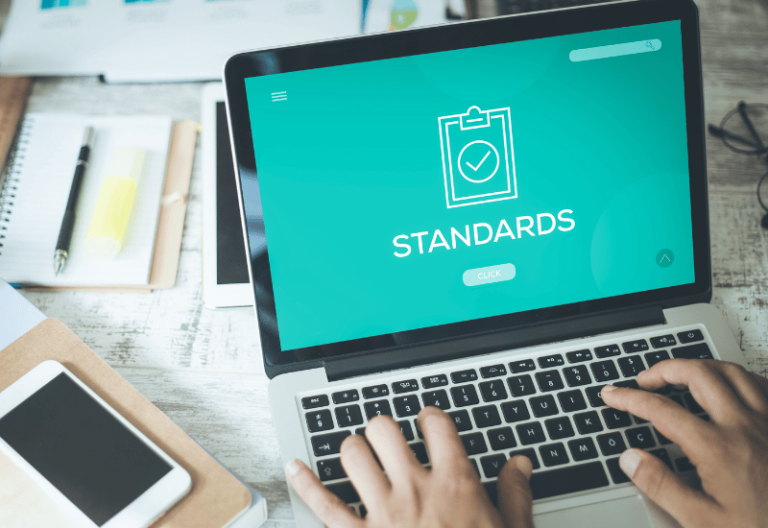Certification serves as proof of an individual’s competency. The same goes for those in the healthcare industry, particularly those who must abide by the HL7 standards, such as healthcare IT developers and project managers.
This post below explores what HL7 certification is all about, who needs it, and why it is important.
Table of Contents

What Is HL7 Certification?
HL7 certification is a document attesting to one’s knowledge and proficiency in health information technology (HIT) standards. These standards were developed by Health Level Seven International, a nonprofit organization that provides a comprehensive framework for the secure exchange, integration, and retrieval of electronic health data.
Importance of HL7 Certification
Understanding and acquiring a HL7 certification is crucial for professionals seeking expertise in FHIR standards. This certification is widely recognized in the healthcare IT industry, which signifies the commitment to the industry standards set by HL7. Having such recognition can promote better health outcomes and patient care quality.
Being HL7-certified enables you to confidently navigate health information exchange systems, showcasing your knowledge and skills in health informatics and interoperability. Obtaining such certification also indicates your commitment to upholding HL7 standards, ultimately benefiting the healthcare industry as a whole.
HL7 Certification Requirements
There are no prerequisites for the HL7 FHIR proficiency exam. However, one must have a Bachelor’s degree in Computer Science to start this course. Most companies won’t accept an associate degree; therefore, it would be better (but not required) to possess other technical skills such as basic programming (C#, Java, and JavaScript). More importantly, you’ll need to have a basic understanding of HL7 FHIR and how it works.

Exam Preparation for HL7 Certification
To increase your chances of getting HL7 certification, you’ll need to thoroughly prepare before taking the exam, which covers the following:
- FHIR principles (Implementation, Interoperability, and Complexity, among others)
- Fundamental FHIR resource concepts (Foundation, Base, Clinical, Financial, and Specialized)
- Exchange mechanisms
- Conformance and implementation guidance
- Incorporating terminology
- Building safe and secure FHIR solutions
- FHIR maintenance process
- How to use and work with FHIR licensing and intellectual property (IP)
There are two course options you can consider to prepare for the HL7 certification exam:
1. HL7 FHIR Fundamentals Course
This is an introductory course for individuals new to the basic concepts of HL7. It is divided into two workshops: a 12-week seminar for HL7 fundamentals and a 4-week workshop for FHIR fundamentals. Both come with a set of guided exercises so you can start learning the fundamentals at your own pace with practice and examples.
By the end of the course, you’ll be able to:
- Understand the HL7 terminologies and widely-used standards
- Handle projects with interoperability among disjointed healthcare information systems
- Familiarize yourself with controlled vocabularies, master files, and entity registries
- Read ad write V2.X messages and Clinical Document Architecture (CDA®) R2 documents
- Identify FHIR® specifications and resources
What’s the next step? After this course, consider taking the certification exam preparation course or HL7 FHIR R4 Proficiency Exam Review, a webinar that will serve as your guide for the HL7 FHIR R4 Proficiency Exam.
2. HL7 FHIR Path to Certification Bundle
Alternatively, you can opt for the HL7 FHIR Path to Certification Bundle to familiarize yourself with the basic and technical HL7 FHIR concepts.
This course covers the following:
- Introduction to FHIR
- HL7 FHIR R4 Proficiency Exam Review
- Study Tips and Practice Exam
What to Expect
These HL7 preparation courses are instructor-led, with discussions with tutors and peers. You will also undergo assessments such as self-evaluation quizzes, integration activities, projects, exams, and relevant assignments per week. The courses might consume 5 to 7 of your hours per week, but there are no live lectures.
Bonus tip: Download online resources and participate in forums such as the FHIR Community during and after taking the exam preparation courses.
Exams and Costs
The HL7 FHIR certification exam consists of 75 multiple-choice questions with a 2-hour time limit. The passing grade is at least 70%. Meanwhile, the cost varies depending on your training provider and location.
Exam fees could range from $500 to $3000.

Benefits of HL7 Certification
HL7 FHIR certification sets the data standard for interoperability among healthcare organizations.
Here are some of the benefits of HL7 FHIR certification:
Improves EHR technologies and software integration
HL7 certification training helps in enhancing the seamless exchange between EHR systems. Thus, providing a comprehensive view of medical data can improve patient safety and information delivery.
Being HL7 compliant ensures that your health information exchange systems meet industry standards to reduce errors and minimize potential breaches in security. It can also help your organization stay updated with the best practices to enhance workflows and improve patient outcomes.
Facilitates medical coding and data sharing
By understanding the various codes in the healthcare IT industry, you can better organize your medical data to improve patient care. HL7 certification also provides a standardized way of securely exchanging healthcare data between different systems.
This makes it more convenient for healthcare investors to share information. Moreover, it helps disseminate public health data to facilitate the development and implementation of targeted interventions.
Helps implement cost-effective healthcare solutions
Creating interactive systems enables more efficient care delivery. Furthermore, HL7 reduces the need for duplicate tests and procedures, eventually reducing medical costs. You can also save time collecting patient data by improving the exchange process between disparate health systems.







